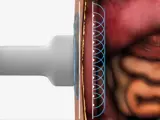A basic knowledge of ultrasound physics and instrumentation is vital to ensure the correct application of ultrasound for both diagnostic and therapeutic interventions. Understanding the physical attributes of ultrasound waves and how images are generated will enable you to obtain optimum images and thus help to prevent misdiagnosis.
This module (a companion to Ultrasound Physics 2) guides you through introductory ultrasound physics principles including sound waves, attenuation, and transducer function. It contains many illustrations and animations to help you understand important concepts that will help you throughout your sonography career.
Ultrasound Physics 1 is suitable for all practitioners of ultrasound, anyone interested in learning about ultrasound physics. It is a valuable learning resource for anyone getting ready for the ARDMS Sonographic Principles and Instrumentation (SPI) Exam.
You’ll learn
- ultrasound physics terminology and definitions
- the basics: units and conversions, scientific notation, exponents and logarithms
- the properties of sound waves, wave motions, concepts such as acoustic impedance and attenuation, and the laws of reflection and refraction
- about power and intensity
- about factors that affect images such as bandwidth, Q factor, beam configuration, slice thickness
- transducer construction, types, frequency, and the different beam shapes
- how an ultrasound system works
- and much more (see Content tab for more detail)





